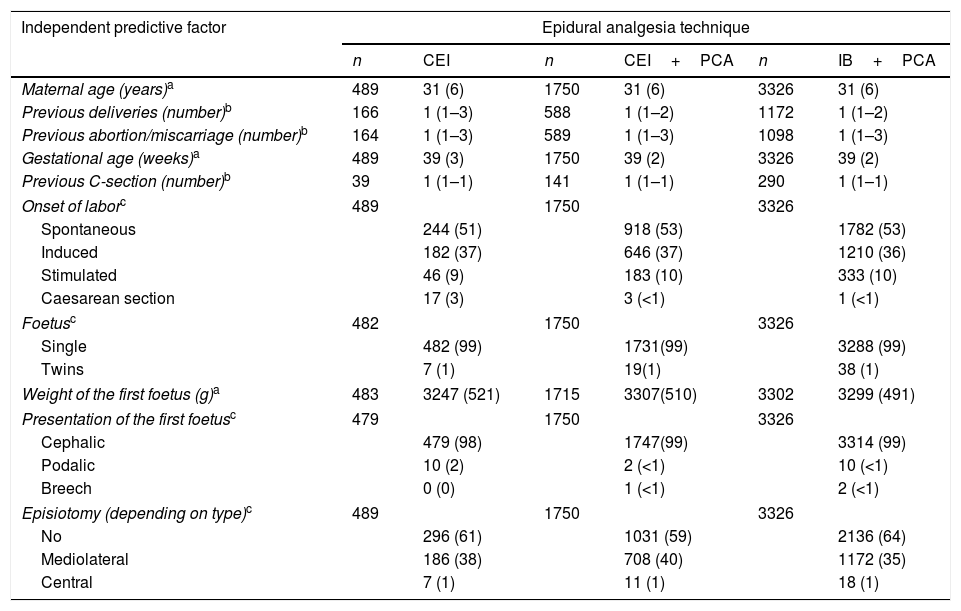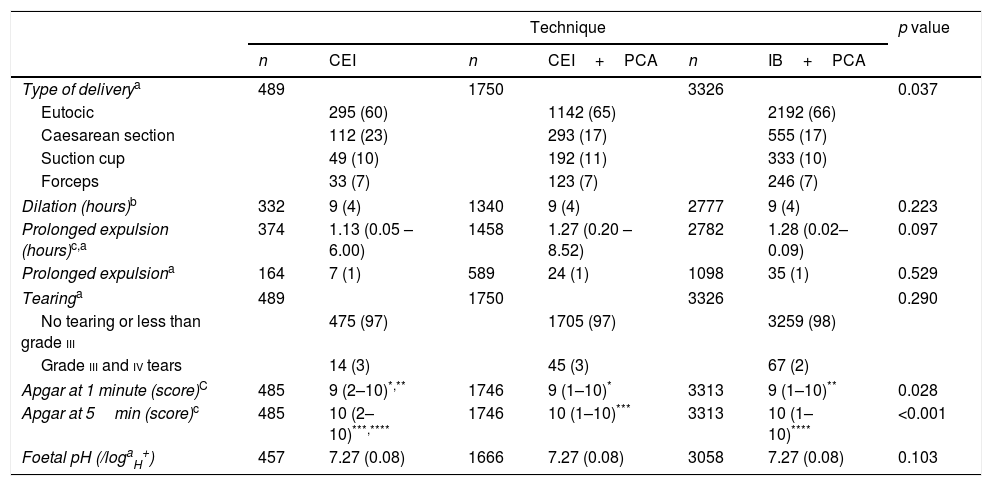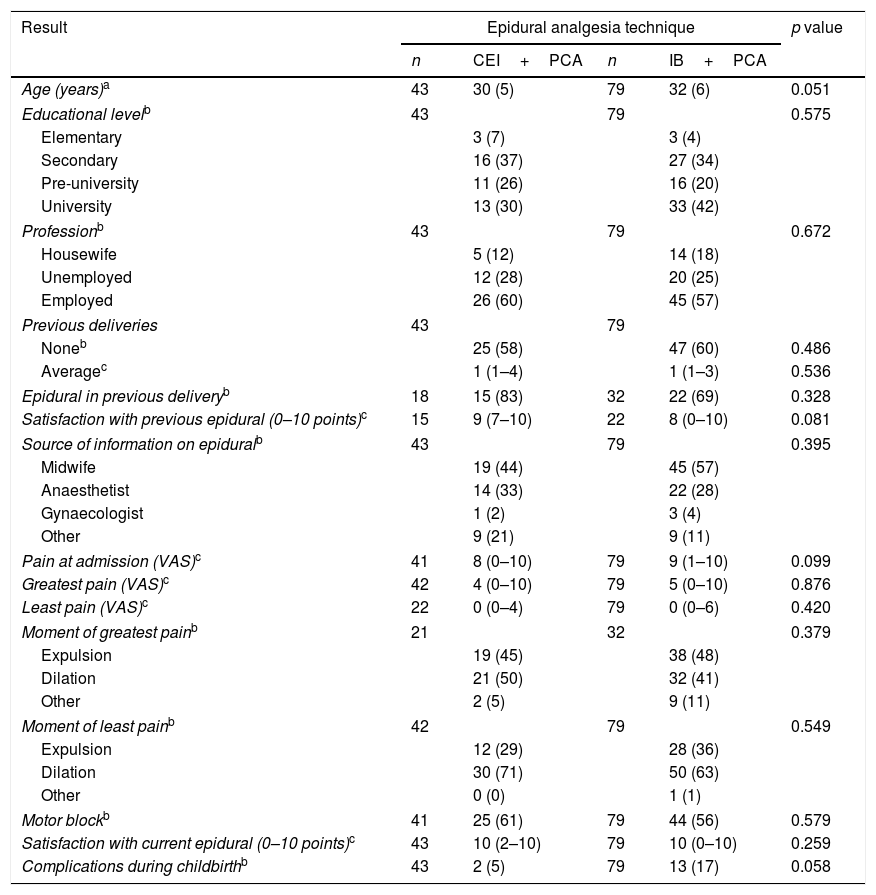In recent years new modalities of epidural analgesia maintenance (EA) have been introduced.
ObjectiveThe objective of this study is to compare different modalities of EA maintenance for childbirth relating the time of expulsive and dilatation, motor blockade and delivery instrumentation (caesarean section, sucker, forceps, eutocic delivery or non-instrumented delivery).
Material and methodsPatients admitted for labor in the University Hospital Nuestra Señora de Candelaria between January 2013 and December 2015 were included. Independent modalities of EA, continuous infusion (CI), continuous infusion plus analgesia patient controlled epidural analgesia were determined as independent variables (CI+PCEA) and intermittent programmed epidural boluses plus patient controlled epidural analgesia (PIEB+PCEA).
ResultsThere are no differences in expulsive time or dilation. There is a difference in the type of instrumentation, caesarean section, sucker, forceps, eutocic delivery or non-instrumented delivery (p>0.05), with the percentage of eutocic deliveries in PIEB+PCEA of 66 versus 60 in CI and 65 in CI+PCEA. The percentage of caesarean sections was 23 in CI, in CI+PCEA and PIEB+PCEA of 17. CI increases by 27% the possibility of instrumented deliveries respect to PIEB+PCEA, there is no difference between CI+PCEA and PIEB+PCEA. The motor blockade at 60 and 90minutes reaches lower values with PIEB+PCEA with an average of 0 and a range of 0–1, compared to CI+PCEA 0 (0–4). Satisfaction with CI+PCEA ranges from 2–10 and with PIEB+PCEA 0–10.
ConclusionIt is possible to say that PIEB+PCEA is associated with higher frequency of non-instrumented deliveries. The possibility of instrumented deliveries increases with CI versus PIEB+PCEA. There is less motor block with PIEB+PCEA than with CI+PCEA. There are no differences in time of dilatation, expulsion, or patient satisfaction.
En los últimos años se han introducido nuevas modalidades de mantenimiento de analgesia epidural (AE).
ObjetivoEl objetivo de este estudio es comparar diferentes modalidades de mantenimiento de AE para parto relacionando el tiempo de expulsivo y dilatación, bloqueo motor e instrumentación del parto (fórceps, ventosa o cesárea).
Material y métodosSe incluyeron pacientes ingresadas para trabajo de parto en el Hospital Universitario Nuestra Señora de Candelaria entre enero de 2013 y diciembre de 2015. Se determinaron como variables independientes las modalidades de mantenimiento de AE, perfusión continua (PC), perfusión continua más analgesia controlada por la paciente (PCA) (PC+PCA) y bolos intermitentes más analgesia controlada por la paciente (BI+PCA).
ResultadosNo encontramos diferencias en el tiempo de expulsivo ni dilatación entre las 3 modalidades. Existen diferencias en la instrumentación (p>0,05) siendo el porcentaje de partos no instrumentados en BI+PCA del 66% frente al 60% en PC y 65% en PC+PCA. El porcentaje de cesáreas fue del 23% en PC, y del 17% en PC+PCA y BI+PCA. La PC aumenta un 27% la posibilidad de parto instrumentado respecto a BI+PCA, no existiendo diferencia entre PC+PCA y BI+PCA. El bloqueo motor a los 60 y 90min alcanza menores valores con BI+PCA con una media de 0 y rango de 0-1, frente a PC+PCA 0 (0-4). La satisfacción con PC+PCA va de 2-10 y con BI+PCA 0-10.
ConclusiónSe puede decir que BI+PCA se asocia a una mayor frecuencia de partos no instrumentados. La posibilidad de parto instrumentado aumenta con PC frente a BI+PCA. Se observa menor bloqueo motor con BI+PCA que con PC+PCA. No se manifiestan diferencias en tiempo de dilatación, de expulsivo, ni satisfacción de las pacientes.












